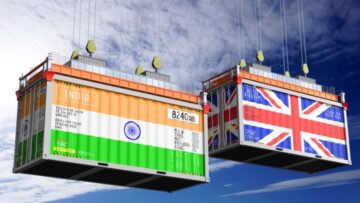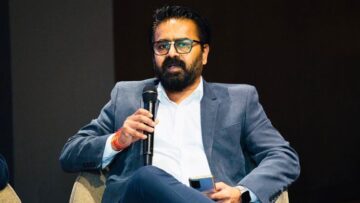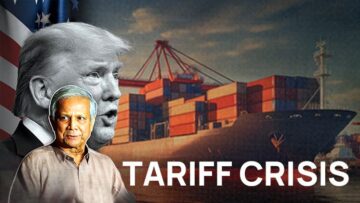
Soch Apparels has been the front runner in the women’s ethnicwear category since not long after its inception in 2005. There have been quite a few bumps in the ethnicwear segment with the overall category going through a transformation wherein it has included in itself a new category altogether which is a mix of Indian and westernwear — fusionwear. And keeping up with the latest fashion trends, Soch too has upped its game and has added a fusion element in its collection.
While the competition against the westernwear range is increasing by the day, retail brands in ethnicwear category are reinventing themselves in order to remain relevant in the market. Soch is one such brand which has fashioned itself to cater to the Indian woman’s desire for ethnic clothes with a trendy twist as this makes total sense since this territory is growing by 15-20 per cent a year. The brand has also launched its range of ‘workwear’ for today’s women. In a candid conversation with Apparel Resources, Vinay Chatlani, Co-founder & MD, Soch, gives more insights about the category and the brand’s positioning in the market.
Many ethnicwear brands have cropped up in India ever since the trend of buying readymade instead of tailoring became popular in India. How has the market evolved?
Vinay Chatlani (VC): The typical trading up happens from dress material to ready-to-stitch and then readymades, going forward to branded clothing. The market is still evolving, with some consumers moving their casual clothing to westernwear and formals and occasionwear to ethnic.
The proliferation of brands in the ethnic space has only fuelled the category to expand. We see unstitched or ready-to-stitch clothing being the step up from pure tailored clothing and preferred by many women who want to direct their own fits, but else there is ample choice in the ready-to-wear market itself, especially with Soch.
India remains a predominantly ethnicwear market, and will continue to do so. When it comes to food, music, cinema and clothing, Indians have a preference for what they consider their own.
Elucidate on your designing process and trend discovery. What are some of the latest trends that are working greatly with the consumers?
VC: Soch has an in-house design team, led by Shoba Chatlani. The latest trends that will be big in the year 2020 are the metallics — gold, silver, platinum, straight pants, gota work, medium tone of pastels and subtle tone-on-tone embroidery.

The brand launched its ‘workwear’ range recently. What has been your objective behind this decision? What is the price range of this collection? How is it performing in the market?
VC: Soch introduced workwear in April 2018. It is important for workwear to be functional, yet not lose the style quotient. Soch has always been at the forefront of combining style with comfort in womenswear. Women are an integral part of our workforce and it was a natural progression for us, as a brand, to venture into workwear and launch a line that combines the best of the ethnic flair that Soch is known for, artfully integrating it with contemporary silhouettes and trends, and creating a range that will allow women to stay stylish yet comfortable through their working day. This range starts at a nominal price of Rs. 798.
Workwear, or weekwear as we term it, is at its early stages of development. We had a solid run last two seasons and we hope to respond to the dynamics and the results of the same to fine tune range and assortment specific to markets. So, at this point, we can only say that this is exciting work in progress.
In the face of major acceptance of westernised clothing by women in India, there has been a series of bumps on the way for ethnicwear brands. How is Soch staying afloat against the rising competition?
VC: While the acceptance of westernwear is increasing, so is the ethnicwear space and we also see the advent of mix and match, which has completely changed the market of ethnicwear. Customers pair their kurtas with knit chudis which are comfortable yet trendy. Many young consumers also mix and match with jeggings, dhoti pants, harem pants, etc. Due to this, ethnicwear is finding greater acceptance with more and more consumers. Despite the popularity of westernwear and fusionwear, ethnicwear still remains the biggest category in womenswear segment in India. Much of this is attributed to the rise of women workforce in the country. We see this segment as continuously rising in the future. However, in one key way, westernwear and fusionwear have impacted ethnicwear tremendously – they have helped create a new language of ethnicwear which is less bound by rules and is worn as per the person’s needs/desires.

Elucidate on your manufacturing units. What is your average lead time — from order placement to warehouse delivery? Does the brand outsource its products or is it manufactured in-house?
VC: Most of our manufacturing is done by our trusted vendors. The lead time varies from product to product based on the quantity and complexity of the manufacturing process. Typically, our sourcing cycle could be anywhere between 30 to 120 days depending on the category.
Most of our products are outsourced from our trusted vendor partners. On the technology front, our stores are equipped with multiple tools that help us service our consumers better. We have implemented a display technology solution which comprises video walls and tablets, linked by a central content management system which helps us play content linked to stock currently in stores. Not only has it helped bring the merchandise alive to the consumer by showcasing it on video, it also promotes offers live in stores in real time, helps conversion at the point-of-sale by helping consumers appreciate product details (flow, look, ensemble, etc.) better.
Tell us about your retail presence and your plans for expansion.
VC: Our existing retail network comprises over 200 touchpoints across EBOs, MBOs and LFS stores. We sell through www.sochstore.com and also from fashion dominant e-stores like Myntra, Jabong, Flipkart, Amazon, TataCliq and Paytm. We plan to essentially double this footprint in three years. We are fairly new entrants to MBO and LFS, so we see larger growth in terms of touchpoints here. The east and north Indian markets are very big, lucrative and exciting spaces that we have just started to explore. We are looking to aggressively expand our foothold in these two markets while continuing to grow in the south and west.






